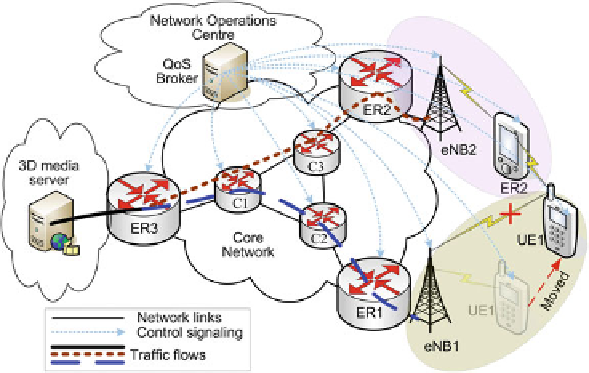Image Processing Reference
In-Depth Information
8.2 Cooperative Communications
Statistical variation of the wireless channel due to multipath fading is a major
impediment for a reliable wireless communication. Furthermore, the loss of a
wireless channel depends on the distance between the transmitter and the receiver,
among others. In a dynamic wireless environment, as mobile nodes move around,
the distance between the transmitter and the receiver varies, which results in the
variation of the underlying wireless channel qualities. As a result, the transmitter
has to slow down the data rate frequently in order to cope with the channel
variations. The channel fading can even be so deep that no reliable communication
is possible, leading to an outage event. As illustrated by Fig.
8.1
, User Equipment
1 (UE1) is initially connected to the network through evolved Node B1 (eNB1) and
is consuming some 3D media content from a server located in the core network,
through the Edge Router 1 (ER1).
As UE1 moves around, the energy cost of the wireless link (Joule/bit) to eNB1
becomes too expensive or the channel quality drops to a level that is unable to
support the required QoS. Besides, UE2 which is located in short distance to UE1
may have good channel quality to eNB2. As a result, UE1 can establish a cooper-
ative handover from the existing direct link to eNB1 to a cooperative link to eNB2,
through UE2. Having performed the cooperative handover, UE1 continues to
download the rest of the 3D media content through the new path (i.e., through ER2).
Fig. 8.1 Illustration of users and networks dynamics

